Having your vehicle aligned is an integral part of the overall maintenance schedule. There can be times when you will need unexpectedly get your vehicle aligned, however. If you are wondering if you need to get your car re-aligned after getting new rear tires, we can help you. We researched vehicle maintenance from multiple professional sources so that you'll know for sure what you need to do.
While not necessary, getting your vehicle aligned after you have your rear tires replaced is recommended. Furthermore, completing this maintenance item any time a tire is replaced is suggested.
Now that we know that getting your vehicle aligned after replacing the rear tires is recommended, we'll take a closer look at why this might be beneficial. You might also be curious about what happens if you never get an alignment or how you can tell if your alignment is off. For the answers to these questions and more, read ahead in this post to see what our research has uncovered.
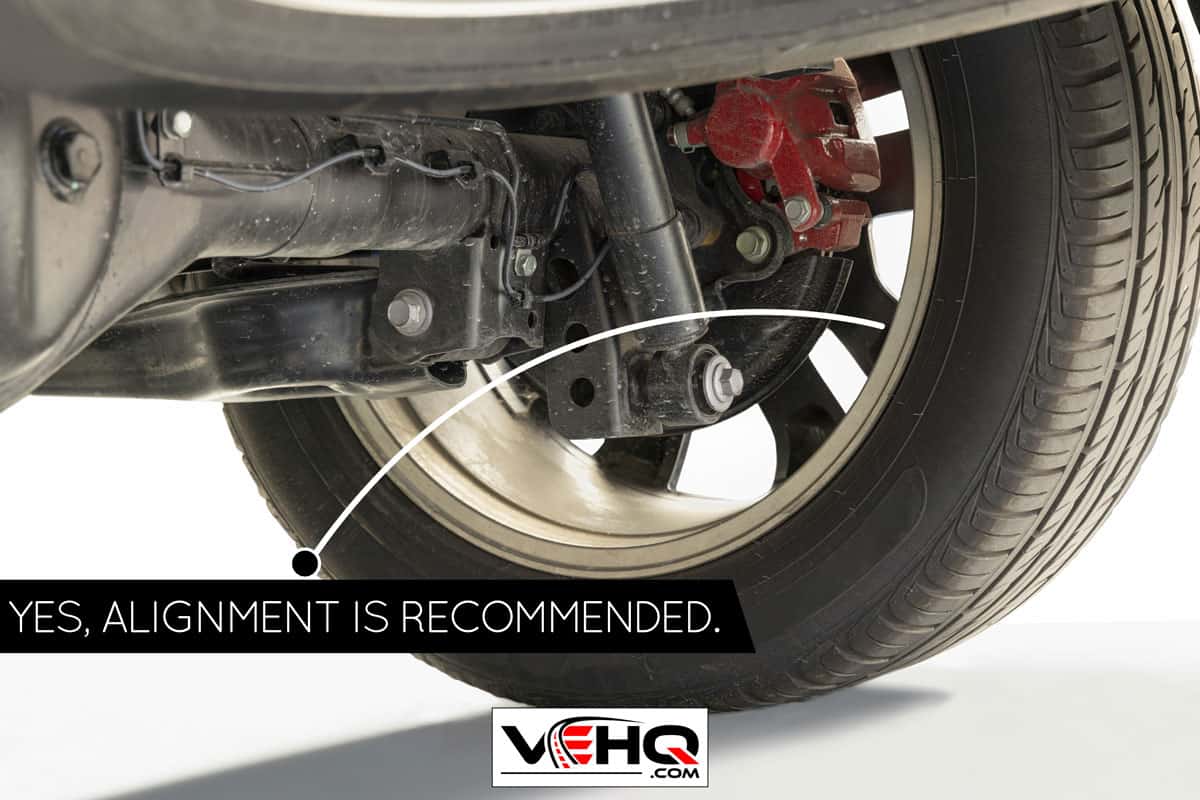
Why we recommend alignment after new tires are installed
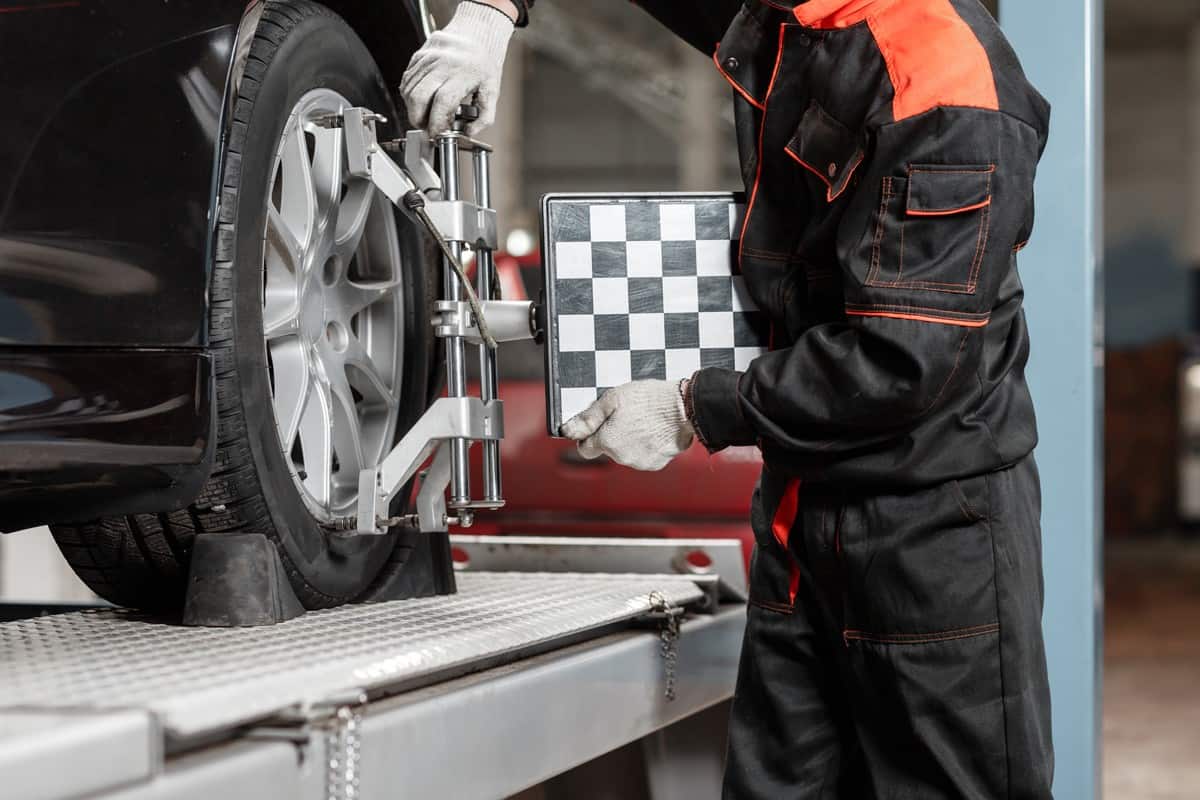
No matter how careful you are when you drive, your vehicle will go out of alignment over time. For that reason, it's important to have this piece of maintenance completed at least annually.
Alignment ensures that your tires are uniformly hitting the pavement. So, if it's been a bit since you've had your wheels aligned, the odds are they will be a little out of wack when you install your new tires.
Though not necessary, we recommend getting your vehicle aligned when the new tires are installed. Front or rear tires, it doesn't matter. These are the only parts of your vehicle that come into direct contact with the roadway and aren't necessarily the cheapest to replace. Ensuring your wheel is aligned correctly when the new tires are installed helps protect your investment.
What happens if you never get your vehicle aligned?
If you are tempted to ignore this important part of your maintenance schedule, you should know that doing so exposes your vehicle to avoidable damage. Later in this post, we'll discuss the damage it will do to your tires. But driving a vehicle that's not properly aligned is about much more than that.
As your vehicle gets more and more out of alignment, you'll notice that you won't be able to drive it as well. It will be harder to steer. It will also be unable to drive at higher speeds without harmful and violent vibrations.
This will cause damage to your suspension system as well. Trust us when we say that a routine alignment for your vehicle will save you time and money.
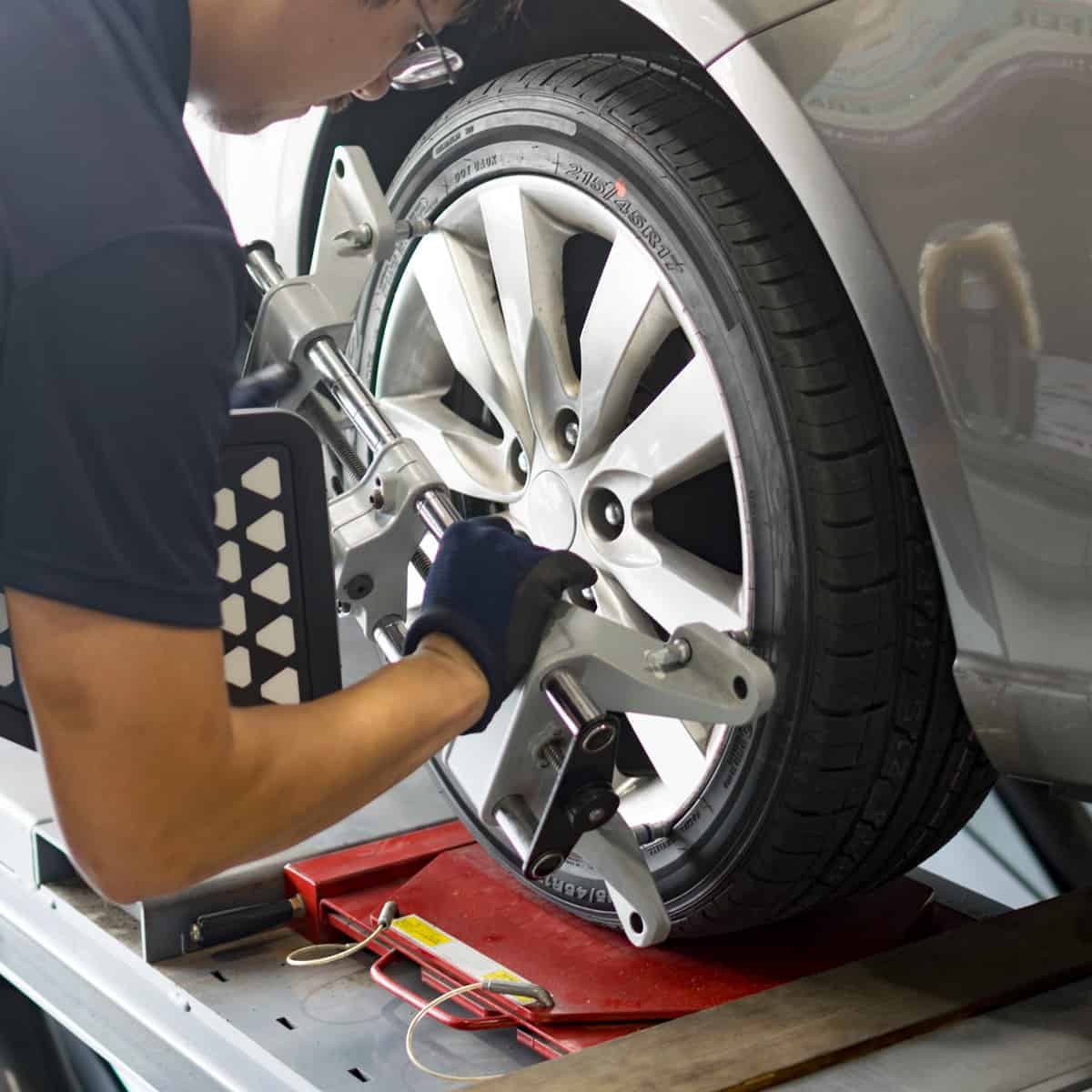
How can you tell if your alignment is off?
While it takes an experienced technician to officially diagnose an alignment issue, there are some pretty telling signs you can look for on your own. Some will take some focus to recognize, while others will present themselves more subtly.
You might notice the vehicle pulling to the right or left
The most common way a layperson will look for misalignment is by paying attention to how their vehicle drives. All you need to do this is a long, flat, straight road stretch.
If you take your hands off the wheel, your vehicle should stay driving relatively straight under those road conditions. But if the vehicle is out of alignment, you will notice that the vehicle will begin to veer to one side of the road or another. The sharper the pull, the more out of alignment your vehicle will be.
If you notice this or any of the following signs, you should get an appointment for alignment as soon as possible. Putting this off will lead to more significant damage to your tires and diminish your vehicle's performance.
The steering can be noisy
If you notice that your steering is making loud noises, you could have an alignment issue. This noise will be especially loud the faster you drive your vehicle.
A car that is not aligned will have tires that do not ride on the road's surface evenly. This will make the tires wear unevenly. When you drive at higher speeds on tires with uneven tread, it will make the car vibrate.
These vibrations will get more intense the more uneven the tread is.
Your tires might make a squealing sound
If your wheels are not properly aligned, you will probably hear your tires making loud squealing noises. Under ideal circumstances, the tires will be hitting the roadway evenly. But when there is an alignment problem, parts of the tire aren't hitting when they should be.
This imbalance will make the tires squeal. This noise will be more noticeable at higher speeds. You will also notice it on tighter corners.
The steering wheel sits crooked
When driving on a flat, straight stretch of road, pay attention to the steering wheel's position. If the vehicle is aligned correctly, the wheel should be straight. But if it is sitting in a slightly turned position, it could indicate that the vehicle is out of alignment.
Since the tires are not evenly hitting the pavement, the steering wheel will reposition itself to compensate. While a steering wheel sitting in this position could indicate other issues, you should have your alignment checked as soon as possible if you notice this.
When in doubt, inspect the tires
The tires will be the biggest casualty of improper alignment. If your vehicle isn't aligned, the tires will wear unevenly. You will be able to notice this by inspecting the tread levels.
Look for the tread to be more worn on one side of the tire than the other. Unfortunately, this tire damage is not reversible. If the tread is too unevenly worn, you will need to replace the tires altogether.
You should have your vehicle inspected yearly to see if it is out of alignment. Depending on how you drive, you may need to do this more often. Doing so will ensure better driving and a much longer life for your tires.
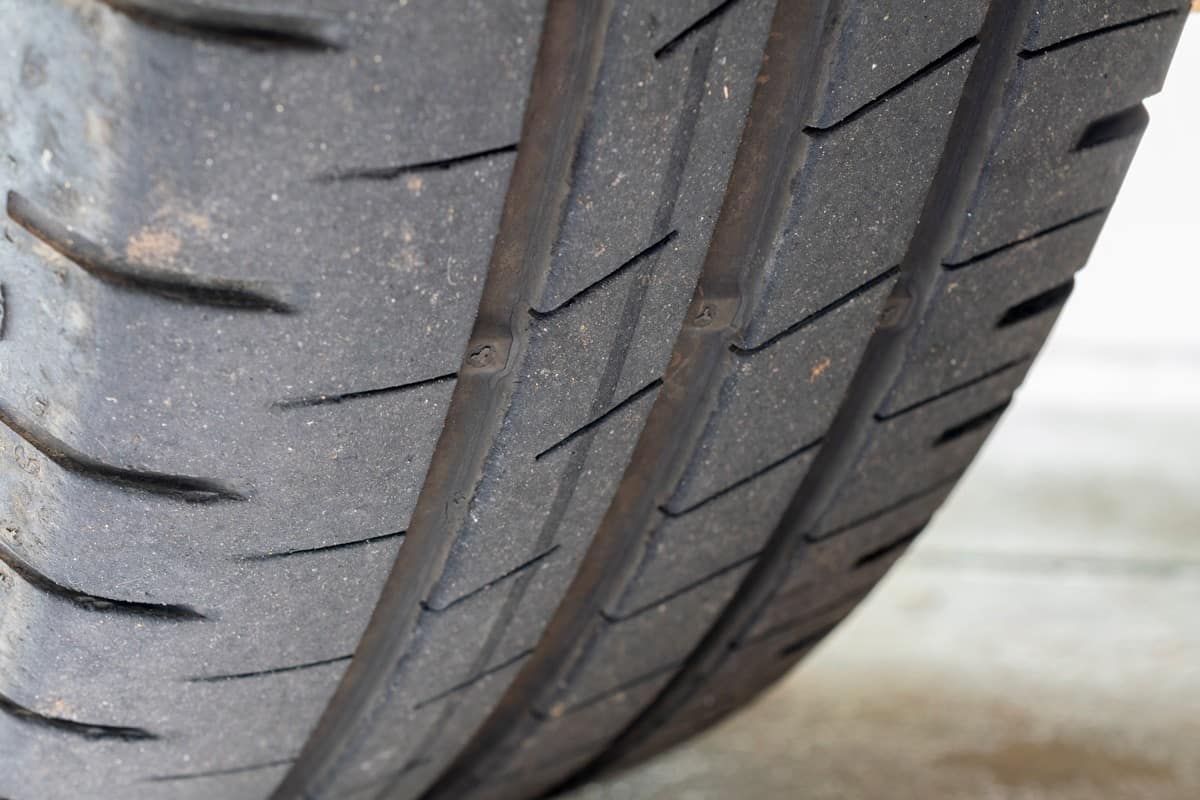
How long does a wheel alignment take?
If you need to align your vehicle, it doesn't take much time. If you make an appointment with your dealership, the entire process won't take more than an hour, from start to finish.
Remember that you will often get more than just an alignment completed at a maintenance appointment. Anything you add to that appointment can impact the time it will take. Plan accordingly, and don't be afraid to get a more exact estimate of the appointment time from the technician.
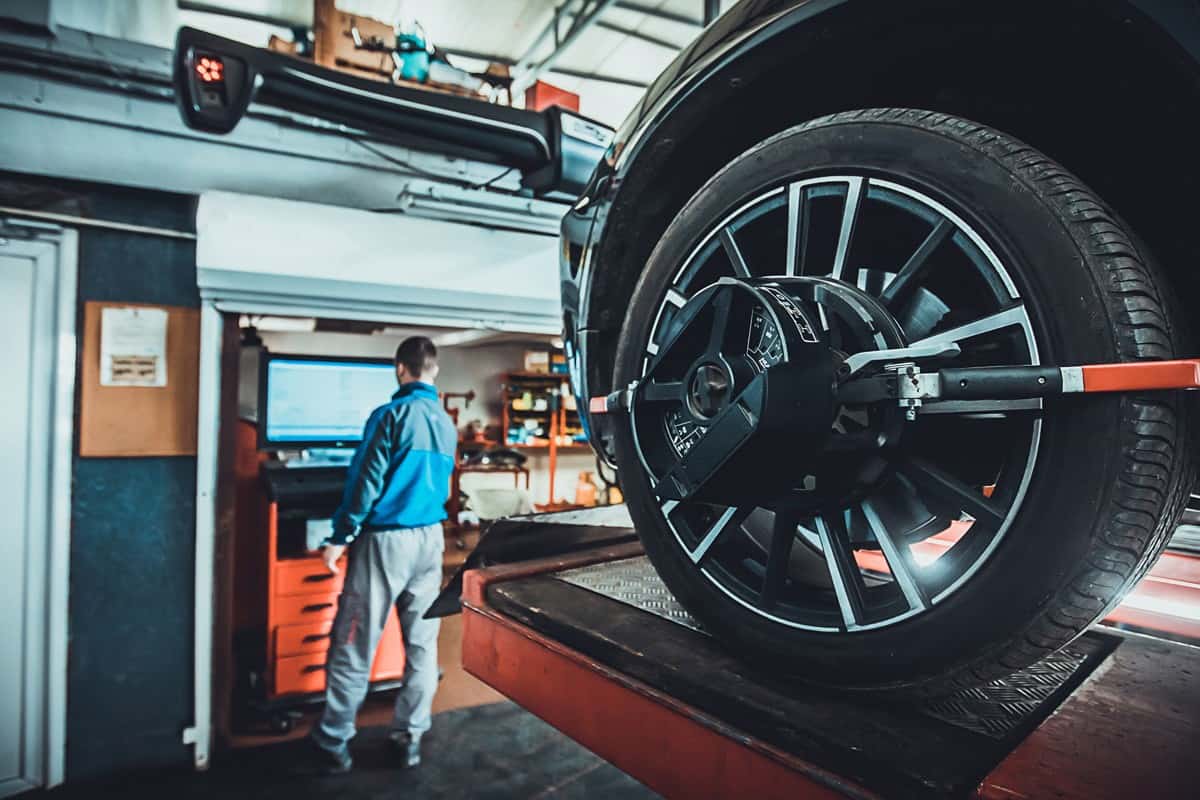
Final thoughts
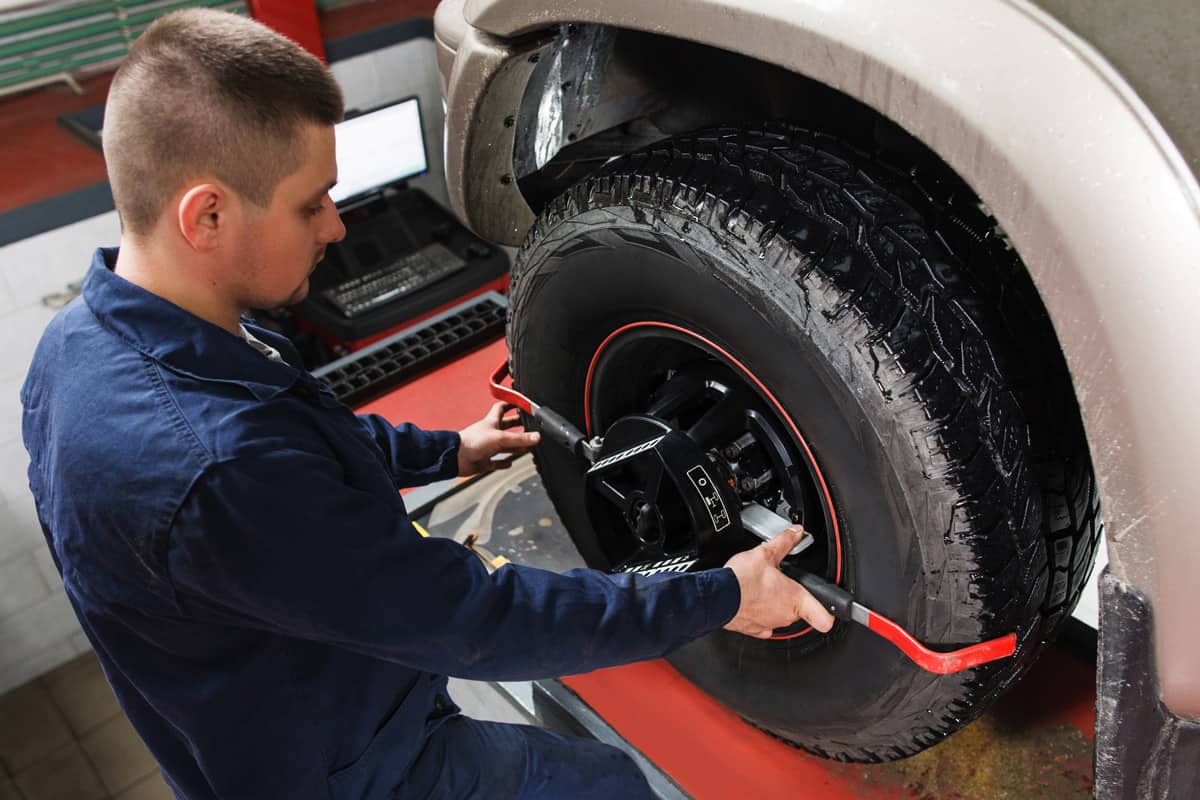
Getting your vehicle aligned is a crucial piece of routine maintenance that should be done every time new tires are installed or once a year, whichever occurs first. If you fail to keep your wheels aligned, you risk doing extensive and irreversible damage to your tires and a substantial decrease in your vehicle's performance. Make it a point to have this procedure done, and you'll get a smoother driving experience. Drive safe!
We hope this post on vehicle alignment answered all of your questions. For more helpful information, we recommend reading the following automotive posts:
Steering Wheel Hard To Turn Right But Not Left – What Could Be Wrong?
How Long Do Spare Tires Last? [And How Far Can You Drive On Them]
